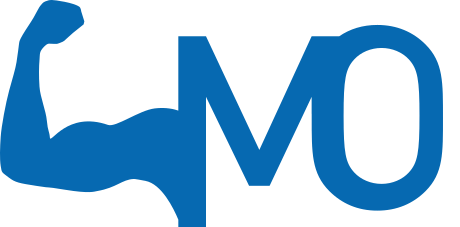Many studies have found that poor strength and endurance of the lower back muscles are significant risk factors in developing lower back pain. Lower back strength exercises can therefore be the key to improving your low back complaint.
Always consult a healthcare practitioner first, to determine if this low back exercise is good for you.
List of conditions which may benefit from this exercise
A diagnosis or exercise prescription for the following conditions can only be done by a medical doctor or your chiropractor. This list has merely been given to discuss this with your therapist. Strengthening exercises should typically not be done when you are in pain, only when you have recovered from the pain or for preventive care.
- Mechanical low back pain, middle back pain, upper back pain, neck pain, pelvic pain.
- Low back herniated disc, sciatica
Three essential steps in building a strong back
Ask your healthcare professional first before starting any rehabilitation program. Build up gradually with exercises to prevent injury and to maximize your performance.
- Understand what your neutral posture is. Most of the exercises start in a neutral posture. Please here read about the importance of posture before starting any exercise.
- Learn and understand about bracing your core. Bracing techniques or understanding co-contraction of your abdominal muscles is essential for day-to-day activities as well as improving during your rehabilitation program.
- Build up strength. Improve your strength utilizing your neutral posture and bracing techniques.
List of conditions which may benefit from this exercise
A diagnosis or exercise prescription for the following conditions can only be done by a medical doctor or your healthcare professional. This list has merely been given to discuss this with your therapist. Strengthening exercises should typically not be done when you are in pain, only when you have recovered from the pain or for preventative care.
- Mechanical lower back pain, middle back pain, upper back pain, neck pain, pelvic pain.
- Recovered herniated disc, sciatica
General tips for lower back exercises
- Frequency: These strengthening exercises are effective for the muscles in and surrounding the lower back. The frequency depends on your goal. If your goal is to build up endurance, rather than strength, then the frequency should be higher. Doing more than 3-4 exercises is not always necessary. Please discuss this with your healthcare professional.
- Combine: Do not do only one exercise per session, instead combine them with similar exercises to have a more powerful effect. On average, a minimum of 3 strengthening exercises per session can be advised to be done together.
- Warming up: These lower back exercises should preferably not be done within the first 15-30 minutes of getting out of bed in the morning. Mobility exercises can be done as a warming up to promote blood flow, reduce stiffness and free up joints.
- Lower back pain: Pain is a warning signal and therefore should never be ignored. Strengthening exercises should be done with care since they may worsen your complaint. Do not continue with this exercise if you experience lower back pain, please ask your healthcare professional for more information.
- Speed: Do not rush. This exercise should be done slowly.
- Stay alert: Concentrate on posture and speed rather than performing the exercise automatically.
- Wear comfortable clothes: Optimal clothing allows for a full range of motion and should not be too lose or too tight.
- Move freely: Always exercise on a clean and flat surface with enough space to move freely.
- Lower back pain risk factors: Think about the risk factors: Change your lifestyle to prevent or minimize lower back complaints. A static posture can make you feel worse. Move a lot during the day, minimize the continuous load on the spine and try to stay active.


